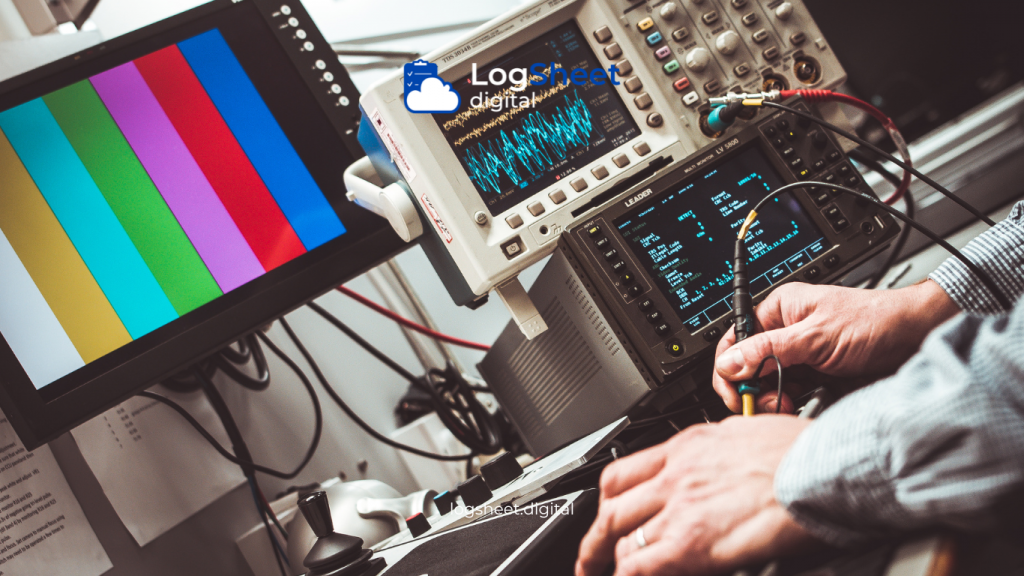In this digital era, efficiency and accuracy are two important aspects in the management and maintenance of equipment in various industrial sectors. Calibration, which ensures that measurement and control equipment is functioning properly, is crucial for maintaining product quality and compliance with regulations. Digital logsheet have emerged as a modern solution to enhance the efficiency of the calibration process in industries. This article will discuss the advantages of using digital logsheet, their key features, and their application in improving calibration productivity and accuracy.
Why is Calibration Important in Industry?

Read More: Improving Industrial Safety with Digital Logsheets
Ensuring Measurement Accuracy
Calibration is the process that guarantees the accuracy of measuring instruments so that the results obtained are reliable. In industries such as manufacturing, pharmaceuticals, and energy, poorly calibrated instruments can lead to production errors, decreased product quality, and even potential safety risks.
Compliance with Regulations
Many industries are required by government regulations to calibrate equipment periodically. Failing to comply with these regulations can result in fines, sanctions, or even cessation of operations.
Operational Efficiency
Timely calibration helps maintain equipment in optimal condition, reducing downtime and minimizing unexpected repair costs.
Digital Logsheets: A Modern Solution for Calibration

Read More: Overcoming the Challenges of Implementing Digital Logsheets in Logistics Environments
What is a Digital Logsheets?
A digital logsheet is an electronic recording tool that replaces the manual logsheets used to record calibration, inspection, and equipment maintenance data. These logsheets can be accessed via computers or mobile devices, providing a more efficient and structured way to manage calibration data.
Advantages of Digital Logsheets Over Manual Logsheets
- Real-Time Data Access: Data entered into digital logsheets can be accessed anytime and anywhere, allowing teams to monitor calibration status in real-time.
- Data Security and Backup: Digitally stored data is safer than manual logsheets, which are vulnerable to loss or damage.
- Integration with Other Systems: Digital logsheets can be integrated with other management systems, such as Computerized Maintenance Management Systems (CMMS) or ERP, for smoother data flow.
- Improved Data Accuracy: Digital data entry reduces the likelihood of human errors that are common with manual recording.
Key Features of Digital Logsheets for Calibration

Read More: Sustainability in Safety: How Digital Logsheets Impact Industries
1. Automated Data Entry
Digital logsheets come equipped with automated recording features that can directly import data from calibration devices, reducing the time needed for manual data entry.
2. Reminders and Notifications
Reminder features ensure that calibration is performed on time, minimizing the risk of delays in equipment maintenance.
3. Analytical Reports
Digital logsheets provide analytic features to evaluate trends and patterns in calibration data. This helps companies make data-driven decisions and improve operational efficiency.
4. Calibration History Tracking
Digital logsheets make it easier to track the calibration history of each piece of equipment, facilitating audits and ensuring that all procedures are followed according to standards.
Benefits of Using Digital Logsheets in Industry

Read More: Optimizing Asset Maintenance Through the Implementation of Digital Logsheets
Improving Calibration Process Efficiency
By automating data entry and processing, digital logsheets speed up the calibration process, reduce administrative time, and allow technicians to focus on higher-value tasks.
Improving Compliance and Auditability
Digital logsheets simplify the collection of data for audits. Accurate and complete data help companies meet regulatory requirements and streamline third-party inspections.
Reducing Human Errors
Manual logsheets are often prone to errors, such as incorrect recordings or data loss. With digital logsheets, this risk is minimized due to data verification features and automatic input.
Operational Cost Savings
While initial implementation may require an investment, long-term savings from increased efficiency, reduced downtime, and the avoidance of errors that could result in larger losses make it a cost-effective solution.
Application of Digital Logsheets in Various Industries

Read More: Digital Logsheets and the Transformation of Industrial Calibration Processes
1. Manufacturing Industry
In the manufacturing industry, digital logsheets help in monitoring and controlling production quality. Timely calibration ensures product quality, reduces defects, and enhances customer satisfaction.
2. Pharmaceutical Industry
The pharmaceutical industry relies heavily on measurement accuracy to ensure the safety and effectiveness of its products. Therefore, precise calibration is essential. With the use of digital logsheets, pharmaceutical companies can ensure that all equipment is calibrated according to the applicable standards. Moreover, digital logsheets provide a more efficient and accurate way to track calibration activities, reducing the risk of human error. As a result, companies can maintain compliance with regulations while ensuring the highest quality of their products.
3. Energy Industry
In the energy sector, it is crucial for measurement equipment to always be in optimal condition in order to prevent economic losses and enhance efficiency. To achieve this, digital logsheets enable energy companies to more effectively monitor their measurement and control tools. Furthermore, by using digital logsheets, companies can streamline their operations and ensure the continuous functionality of essential equipment. As a result, they can reduce the risk of equipment failure and improve overall productivity.
Challenges in Implementing Digital Logsheets

Read More: Digital Logsheets for More Planned Quality Operations Supervision
1. Initial Costs
Implementing a digital logsheets system may require significant initial investment in hardware and software, as well as training for staff.
2. Adoption of New Technology
Some companies, however, may face challenges in adopting new technology. These challenges may include the need for staff training and adjustments to existing work procedures.
3. Data Security
While digital logsheets offer advantages in data security, companies must ensure that the stored data is well protected by implementing proper cybersecurity policies.
Conclusion

Read More: Digital Logsheets: Enhancing Maintenance Management and Scheduling in Workshops
Digital logsheets are a significant modern solution to enhance calibration process efficiency in various industries. With benefits such as reduced human errors, improved data accuracy, and easy access, digital logsheets help companies save time and costs while maintaining quality and compliance. Despite the challenges in implementation, the long-term benefits make them a highly valuable option for companies seeking to improve productivity and operational efficiency.






leave your comments